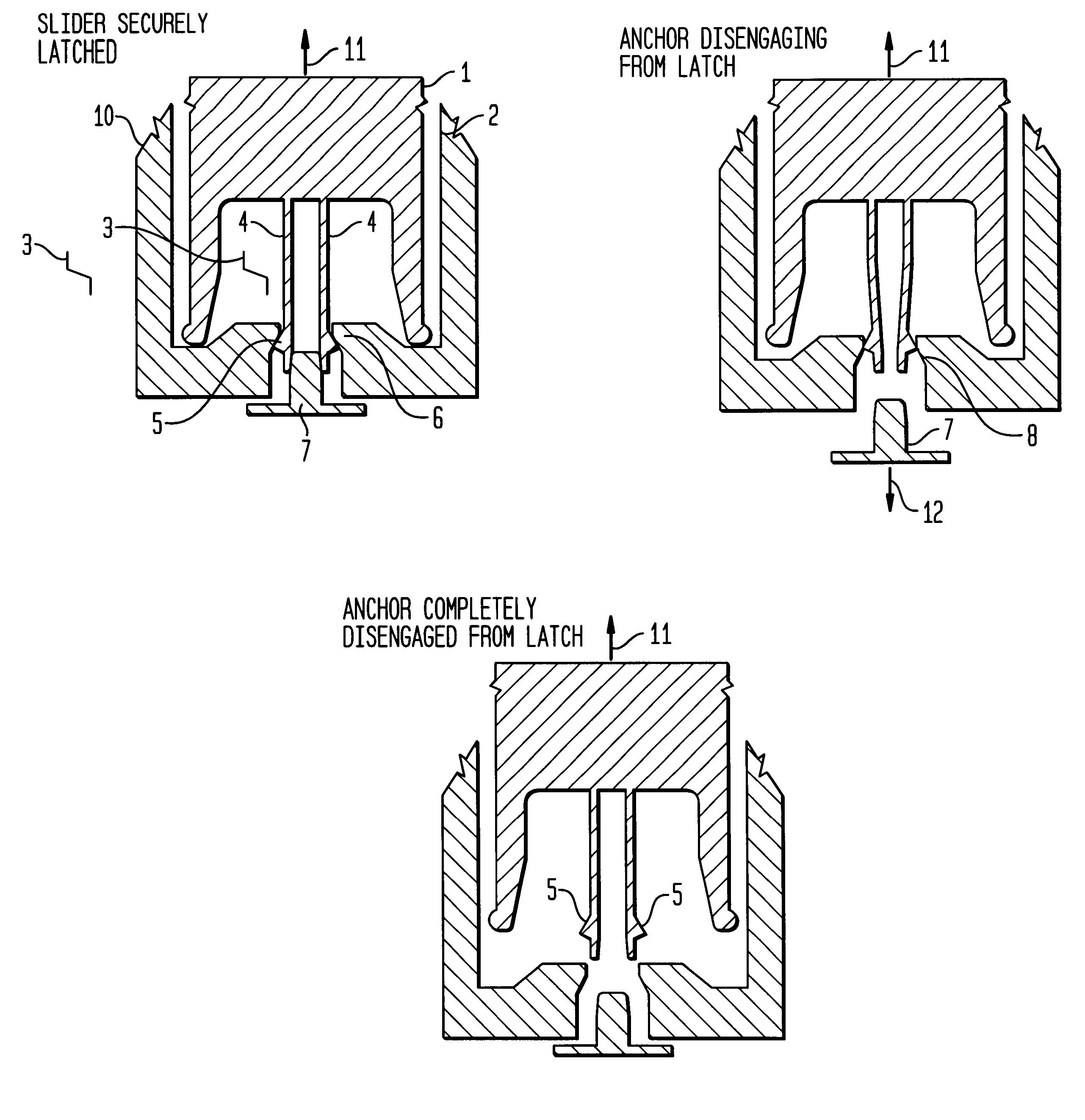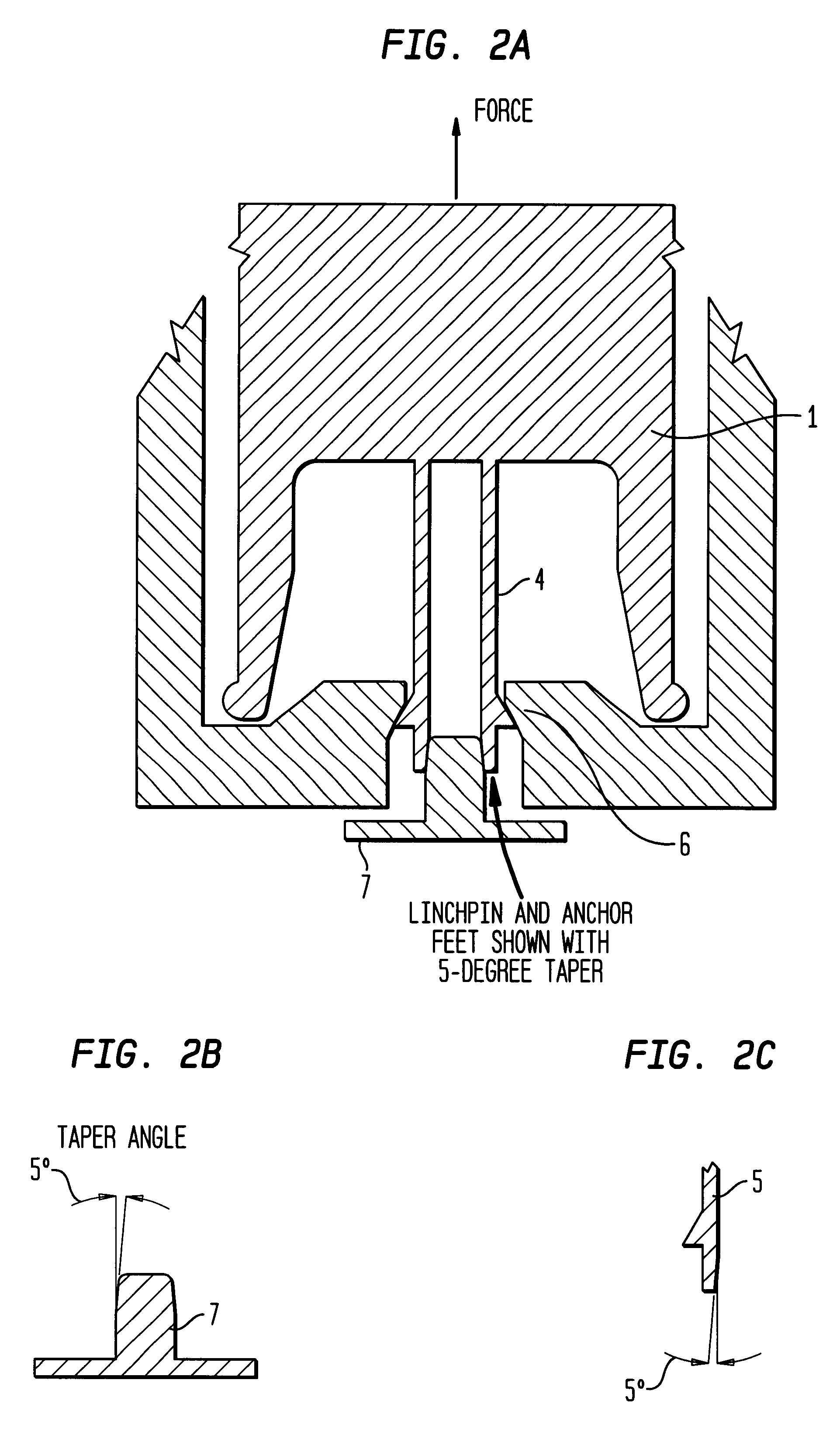Microelectromechanical systems (MEMS) -type devices having latch release and output mechanisms
- Summary
- Abstract
- Description
- Claims
- Application Information
AI Technical Summary
Benefits of technology
Problems solved by technology
Method used
Image
Examples
first embodiment
Operation of the First Embodiment
While Latched: The anchored or latched slider member shown in FIG. 1a, is strongly secured. No force in lateral, up, or down directions can pull the anchor feet free of the constriction so long as the linchpin remains in place between the feet, the tensile strength of the anchor legs is not exceeded, and a cover plate holds the moving parts in plane, see FIG. 15. Thus the device is capable of "holding off" large forces or loads encountered in civilian or military applications. These loads especially include those associated with the military logistic environment, such as transportation vibration, and handling / mishandling drop impacts, as well as those of munitions loading in the breech of a gun. The invention can "hold off" these forces or loads while still being responsive and functional when the proper launch environments are encountered.
Latch Releasing: Latch release shown in FIG. 1b is effected by moving the linchpin downward from between the anc...
second embodiment
the invention provides an additional functioning to the first embodiment discussed above wherein the slider mass can go from a free / unlatched position into a latched / anchored position or a latched / enabled position. The sequences of operational events of this embodiment are similar to the operations of the first embodiment as discussed above and the slider member can start out in its free position as shown in FIG. 4a and move downward to become anchored and locked, see FIG. 4b and 4c. Next, the slider member can start out in its free position as shown in FIG. 4a and move downward to become anchored but not locked. "Latched" refers to the anchor feet are fully inserted into the latch / constriction, "not locked" means that the linchpin is not inserted between the anchor feet. In this latched / non-locked condition, the slider mass is enabled to respond to a force input to go unanchored again. Subsequently, the linchpin can be caused to re-insert itself between the anchor feet. Because the...
third embodiment
of the Invention
Referring to the FIGS. 7-13, various mechanical output pin assemblies (discussed in FIG. 14) that are preferably used in combination with a MEMS-type S&A device are shown. These output pin assemblies in association with an integrated or coupled MEMS-type or miniature non-MEMS-type device provide mechanical closing or opening of an output function as shown in FIGS. 7 and 8 or mechanical displacement of an optical fiber shown in FIG. 9.
In FIG. 7a, the flexible electrical contact arm 80 is deflected upwards by the action of the mechanical output pin 25 when it is extended by the action of the actuation slider 82 to where it pushes against an electrical contact 81 and thus closes an electrical circuit. In FIG. 7b, the circuit is shown closed by the action of the mechanical output pin 25 pressing the contacts together.
In FIG. 8a, a normally closed (NC) switch configuration is shown in which the contact arm 80 and contact 81 are already in contact and the action of the mec...
PUM
 Login to View More
Login to View More Abstract
Description
Claims
Application Information
 Login to View More
Login to View More - R&D
- Intellectual Property
- Life Sciences
- Materials
- Tech Scout
- Unparalleled Data Quality
- Higher Quality Content
- 60% Fewer Hallucinations
Browse by: Latest US Patents, China's latest patents, Technical Efficacy Thesaurus, Application Domain, Technology Topic, Popular Technical Reports.
© 2025 PatSnap. All rights reserved.Legal|Privacy policy|Modern Slavery Act Transparency Statement|Sitemap|About US| Contact US: help@patsnap.com



